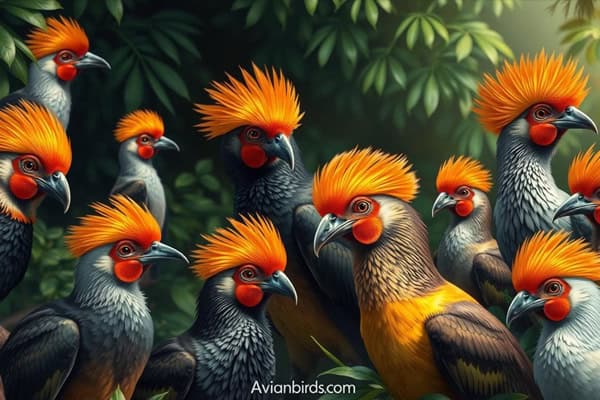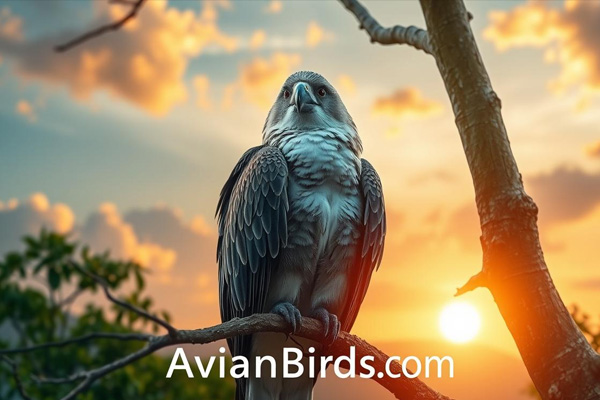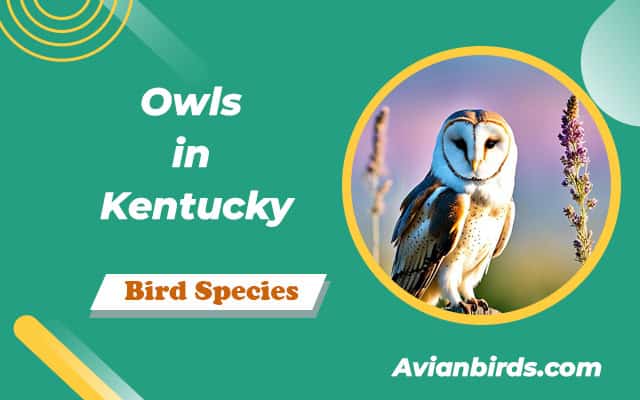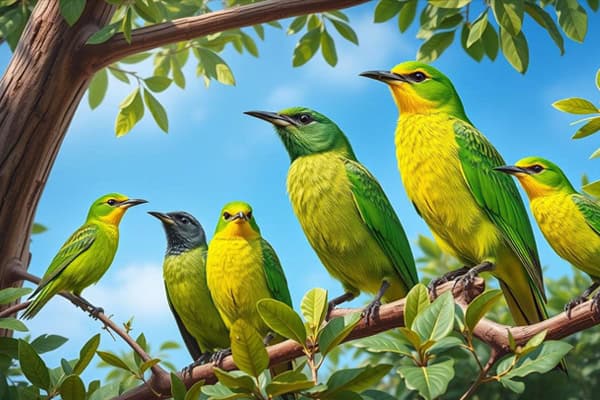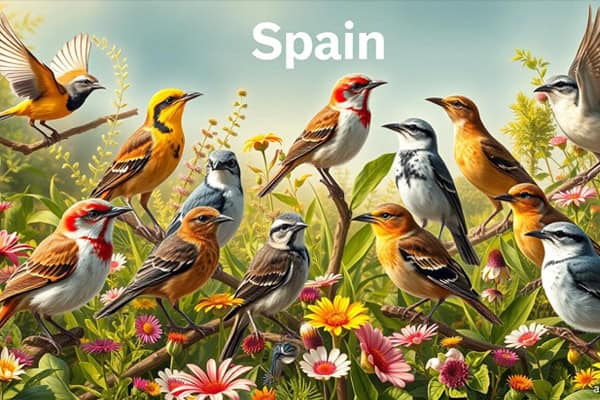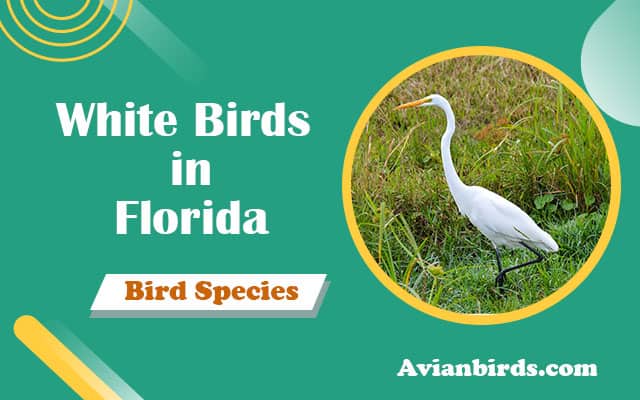11 Stunning Birds With Orange Heads (With Pictures)
Did you know only about 15% of birds have vibrant orange colors? This makes birds with orange heads a rare and beautiful sight. We’re excited to show you 11 stunning orange-headed bird species that capture the hearts of bird lovers worldwide.
These colorful birds brighten our skies and show the beauty of bird life. They add color and diversity to our world. Let’s explore these amazing birds and learn about their unique traits and homes.
If you love birdwatching or enjoy nature’s colors, you’ll find this fascinating. We’ll share the amazing features of these orange-headed birds. Join us to discover the beauty of these feathered friends with their striking orange colors!
Introduction to Birds With Orange Heads
We’re diving into the world of orange-headed birds, which is full of vibrant colors and unique species. These birds catch the eye of birdwatchers and nature lovers. Their bright orange heads make them easy to spot and appreciate in the wild.
The bright colours of these birds are important for many reasons. They help in finding a mate and show how healthy they are. These colours also help them hide from predators and survive. Learning about the role of colour in bird life helps us value these birds more.
We’re going to look at 11 special bird species with orange heads and share their unique traits and behaviours. This journey will be both interesting and beautiful.
| Characteristic | Details |
|---|---|
| Coloration | Bright orange heads, often with contrasting body colors |
| Habitat | Varied ecosystems like forests, wetlands, and mountains |
| Purpose of Color | Mating displays, camouflage, predator evasion |
| Birdwatching Appeal | Visually stunning and easy to identify in the field |
1. Western Tanager
- Scientific Name: Piranga ludoviciana
- Size: 18–20 cm (7–8 in) in length
- Weight: 20–30 g (0.7–1.1 oz)
- Lifespan: 2–6 years on average
- Diet: Insects, fruits, and berries
The Western Tanager is a bird that catches our eye with its bright colours and happy look. It lives in many places in western North America, and knowing where it lives helps us understand its life and actions.
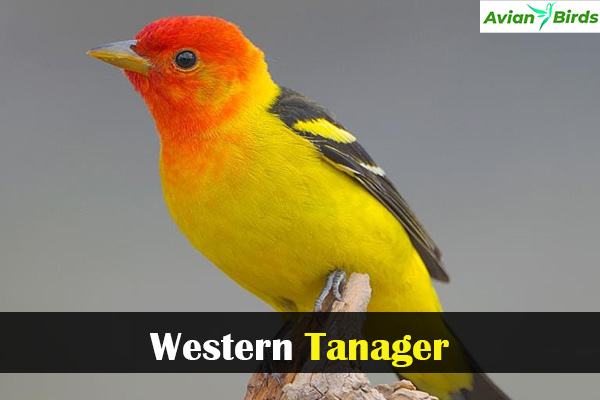
Habitat and Distribution
The Western Tanager (Piranga ludoviciana) lives in different places, such as:
- Forests
- Open woodlands
- Orchards
- Parks
This bird likes living in places that are not too low or too high up. It breeds in the western United States and some parts of southwestern Canada. When winter comes, it moves south to Mexico and Central America for warmer weather and more food.
Diet and Feeding Habits
The Western Tanager eats different foods at different times of the year. In the summer, it eats lots of insects. When it starts to migrate, it eats more fruits, like berries. This helps it survive its long trip.
Eating insects and fruits shows how the Western Tanager can live in many places all year round.
2. Rufous Hummingbird
- Scientific Name: Selasphorus rufus
- Size: 7.5–9 cm (3–3.5 in) in length
- Weight: 2.0–4.0 g (0.07–0.14 oz)
- Lifespan: 3–5 years on average
- Diet: Nectar, insects, and spiders
The Rufous Hummingbird is known for its bright appearance and amazing migrations. These small birds are a joy to watch. Their unique features and behaviors make them popular with bird lovers and nature fans.
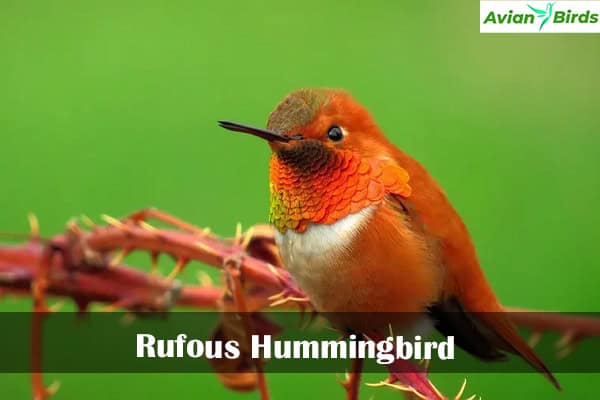
Appearance and Coloration
The Rufous Hummingbird (Selasphorus rufus) stands out with its bright orange-rufous head and body. Males shine with iridescent feathers that change colors in the light. Females look similar but have a softer colour, adding beauty to their looks.
Their colours are not just pretty. They help the birds in many ways, like finding a mate and defending their territory.
Migration Patterns
The Rufous Hummingbird’s migration is truly amazing. They breed in the northern Pacific, from southeastern Alaska to the northwest U.S., and then fly to Mexico or the southern U.S. for the winter.
This journey shows their strength and skill in finding their way. It’s one of the most incredible things in nature.
3. Streak-backed Oriole
- Scientific Name: Icterus pustulatus
- Size: 20–25 cm (7.9–9.8 in) in length
- Weight: 40–50 g (1.4–1.8 oz)
- Lifespan: 3–5 years
- Diet: Fruits, nectar, and insects
The Streak-backed Oriole, known as Icterus pustulatus, has an orange and black look. It has an orange head and a black face mask. You can find this bird in Mexico, Central America, and sometimes in the U.S. Southwest. Learning about this bird helps us appreciate its beauty more.

These orioles live in many places. They like tropical woods but also visit parks and cities. They eat insects and nectar, making them flexible in different environments.
Here’s a quick look at some key traits and habitat preferences of the Streak-backed Oriole:
| Characteristic | Description |
|---|---|
| Coloration | Tropical woodlands, parks, and urban areas in Mexico, Central America, and the U.S. |
| Habitat | Insects and nectar showcasing adaptability |
| Diet | Insects and nectar, showcasing adaptability |
| Distribution | Primarily found in Mexico and Central America; occasional visits to the U.S. |
Seeing the Streak-backed Oriole in nature shows us their lively world. Their presence brightens our surroundings, reminding us of nature’s diversity.
4. Ruddy Kingfisher
- Scientific Name: Halcyon coromanda
- Size: 28–30 cm (11–12 in) in length
- Weight: 100–150 g (3.5–5.3 oz)
- Lifespan: 5–10 years on average
- Diet: Fish, amphibians, and crustaceans
The Ruddy Kingfisher Birds With Orange Heads is a bird that catches the eye. Also, It has a dark orange head and chestnut upperparts. It lives mainly in southeastern and eastern Asia. It loves the dense forest near water, making it a key part of its home.

Feeding Behavior
This kingfisher is a great hunter. It eats mostly:
- Fish
- Amphibians
- Crustaceans
It uses its sharp beak to catch food. The Ruddy Kingfisher dives fast to grab its prey. It sits quietly on branches over water, waiting for the right time to strike. Watching it feed shows how well it fits into its environment.
5. Flame-colored Tanager
- Scientific Name: Piranga bicolor
- Size: 18–20 cm (7–8 in) in length
- Weight: 20–30 g (0.7–1.1 oz)
- Lifespan: 2–5 years on average
- Diet: Fruits, seeds, and insects
The Flame-colored Tanager catches our eye with its bright colours and lively spirit. It’s not just a pretty bird. It also shows us how it can adapt and survive in nature.
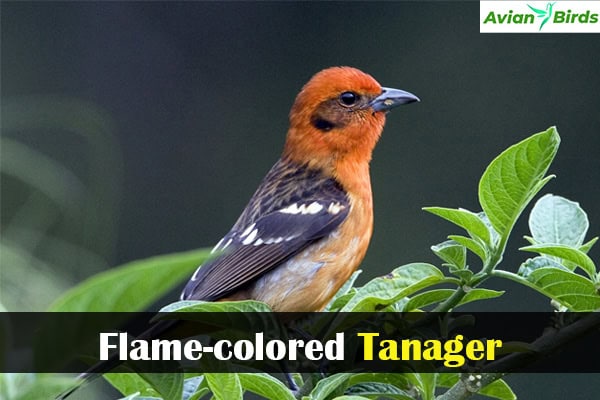
Breeding and Nesting
When it’s time to breed, the male Flame-colored Tanager shows off its bright orange head and chest, which attracts females. They like to nest in evergreen forests and grassy spots, building open cup nests with twigs, grass, and leaves.
Where to Find Them
These birds are found mainly in Mexico and Central America, but they can sometimes be seen in southern Arizona, too. They like different places and heights, making them fun to watch.
6. Orange-headed Thrush
- Scientific Name: Geokichla citrina
- Size: 22–25 cm (8.7–9.8 in) in length
- Weight: 50–70 g (1.8–2.5 oz)
- Lifespan: 5–10 years on average
- Diet: Fruits, insects, and worms
The Orange-headed Thrush (Geokichla citrina) Birds With Orange Heads is a ground-dwelling bird with bright orange on its head and belly. Also, It has grey wings on top. It lives in forests and gardens in Southeast Asia and the Indian subcontinent. It loves places near streams and ravines.
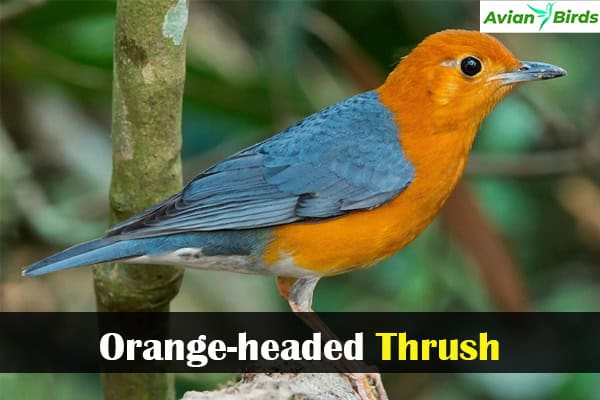
This bird spends its days on the forest floor, looking for food. It eats insects, worms, and fruits. It plays a big role in keeping its home balanced.
| Feature | Description |
|---|---|
| Scientific Name | Geokichla citrina |
| Coloration | Vibrant orange head and underparts with gray upper wings |
| Habitat | Forests and gardens in Southeast Asia and the Indian subcontinent |
| Diet | Insects, worms, fruits |
7. Yellow-billed Kingfisher
- Scientific Name: Halcyon coromanda
- Size: 25–30 cm (9.8–11.8 in) in length
- Weight: 100–150 g (3.5–5.3 oz)
- Lifespan: 5–10 years on average
- Diet: Fish, insects, and small amphibians
The Yellow-billed Kingfisher (Syma torotoro) is a gem in New Guinea’s bird world. It’s known for its bright orange head and neck. This bird is more than just pretty; learning about its home and food helps us value its role in nature.
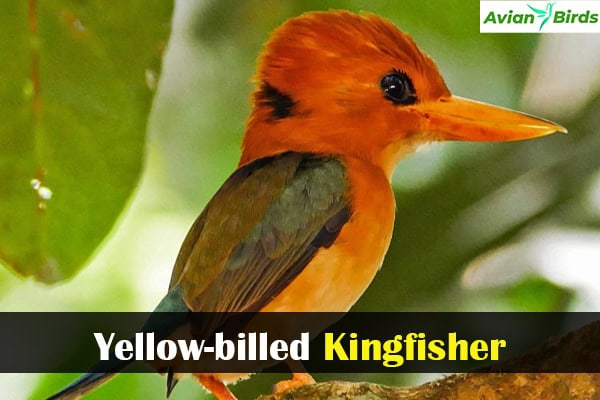
Diet and Habitat
This kingfisher loves the green rainforests, mangroves, and forest edges. These places offer great hiding spots and places to hunt. It eats insects and small reptiles, showing off its hunting skills in the tropics.
| Aspect | Details |
|---|---|
| Common Name | Yellow-billed Kingfisher |
| Scientific Name | Syma torotoro |
| Habitat | Rainforests, mangroves, forest edges |
| Main Diet | Insects, small reptiles |
8. Orange-headed Tanager
- Scientific Name: Thraupis ruficeps
- Size: 18–20 cm (7–8 in) in length
- Weight: 20–30 g (0.7–1.1 oz)
- Lifespan: 3–5 years on average
- Diet: Fruits, seeds, and insects
The Orange-headed Tanager is a standout in South America’s savannas and open woodlands. Its orange-yellow head and gray body make it very noticeable among the plants around it.

These birds eat insects, seeds, and fruits. Eating these foods is important for their survival and helps keep the ecosystem balanced.
As they eat, they spread seeds around. This helps plants grow and increases the variety of life in the area.
We really like the Orange-headed Tanager because it shows how beautiful nature is. It lives in a way that makes its home more beautiful and healthy.
9. Japanese Robin
- Scientific Name: Larvivora akahige
- Size: 14–15 cm (5.5–5.9 in) in length
- Weight: 14–18 g (0.49–0.63 oz)
- Lifespan: 3–5 years on average
- Diet: Insects, worms, and berries
The Japanese Robin, known as Larvivora akahige, is a beautiful bird with an eye-catching orange head and chest. Birdwatchers and nature lovers love to see it.
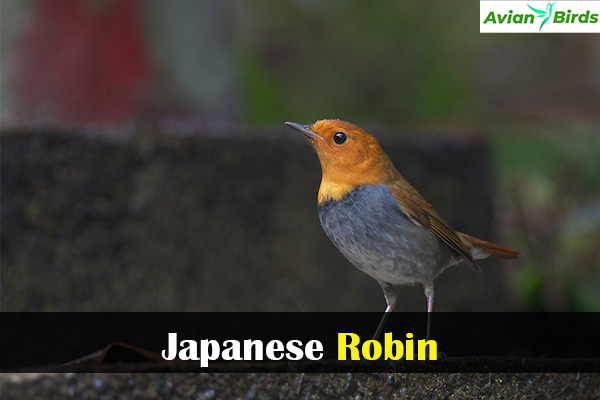
This small bird lives in Japan during the summer. Then, it moves to Southeast Asia for the winter. It can live in many places, showing its unique traits.
Distinctive Features
The Japanese Robin is about 15 centimetres long. It has bright orange on top and brown-grey below. Plus, It likes forests but also visits parks and gardens.
It eats insects, worms, and fruits, which shows how well it can adapt to different places. Its movement with the seasons is a wonder of nature.
10. Scarlet-headed Blackbird
- Scientific Name: Amblycercus holosericeus
- Size: 22–25 cm (8.7–9.8 in) in length
- Weight: 90–120 g (3.2–4.2 oz)
- Lifespan: 5–10 years
- Diet: Seeds, fruits, and insects
The Scarlet-headed Blackbird’s bright orange-red head stands out. It lives in marshes and grasslands in South America and is a favorite among birdwatchers because of its unique look.
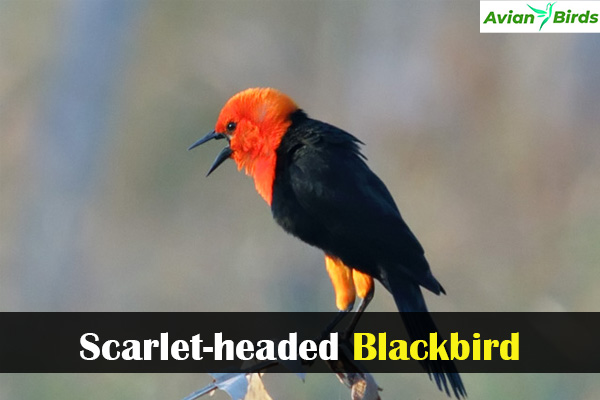
This bird eats many different things. It mostly eats insects, catching them in tall plants. Sometimes, it eats small frogs or seeds, which shows how adaptable it is to finding food.
Seeing the Scarlet-headed Blackbird, an orange-breasted bird with a black head in the wild, is special. It lets us see the beauty of South America’s wildlife. We get to see its beauty and charm up close.
11. Altamira Oriole
- Scientific Name: Icterus gularis
- Size: 23–25 cm (9–10 in) in length
- Weight: 60–80 g (2.1–2.8 oz)
- Lifespan: 5–10 years on average
- Diet: Fruits, nectar, and insects
The Altamira Oriole (Icterus gularis) Birds With Orange Heads is a bird that catches our eye with its bright colors. It’s not just pretty to look at. It also shows us how interesting birds can be with their social ways. They like to hang out in pairs or small groups, showing off their social skills.

They live in open woodlands and even in our backyards. This makes us see how amazing nature is.
Social Behavior and Interaction with Humans
Humans and Altamira Orioles have a special connection. These birds love to visit bird feeders, showing off their bird interaction. By making our yards welcoming, we can draw these birds in. Soon, our yards become a place full of their sweet songs.
When they meet other birds or intruders, they show off their territory. This makes watching them both fun and interesting. Seeing how they interact with each other helps us understand them better. It deepens our bond with nature.
Read More 🐦Related Articles:
| Spiders in California |
| White Birds with Long Beaks in Florida |
| Small Birds with Long Tails |
| Blue Bird With A Red or Orange Chest |
| White Birds in Hawaii |
Conclusion
We’ve looked at birds with bright orange heads and found many amazing species. These birds not only catch our eye but also play big roles in nature. From the Western Tanager to the Altamira Oriole, each one shows us the beauty of birds.
Our Conclusion on Birds With Orange Heads shows why we should love these birds. They make us see the world more closely and push us to help protect nature. By learning about their homes and ways, we grow to love watching birds and caring for their homes.
This Birdwatching Summary shows the fun of seeing these colorful birds in the wild. Whether you’re a bird expert or just like to watch, we can all help protect their homes. Let’s keep celebrating and protecting the amazing birds that fill our skies.

